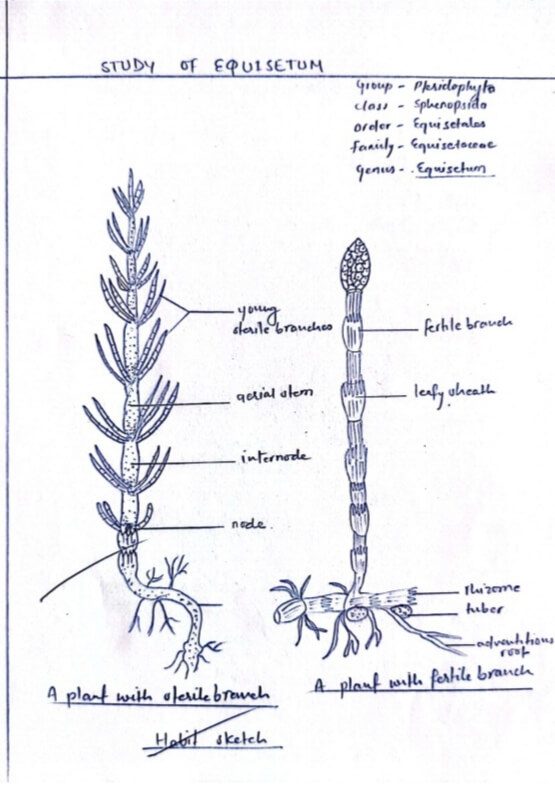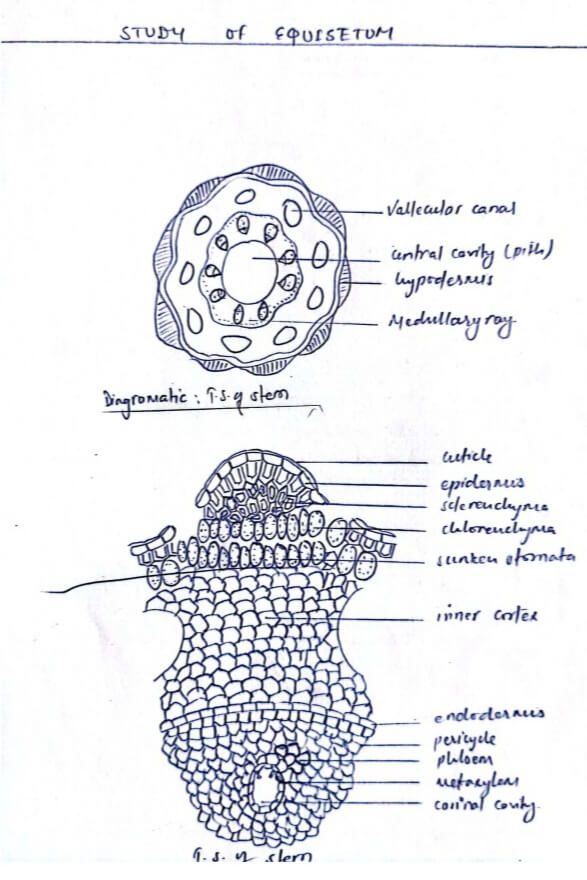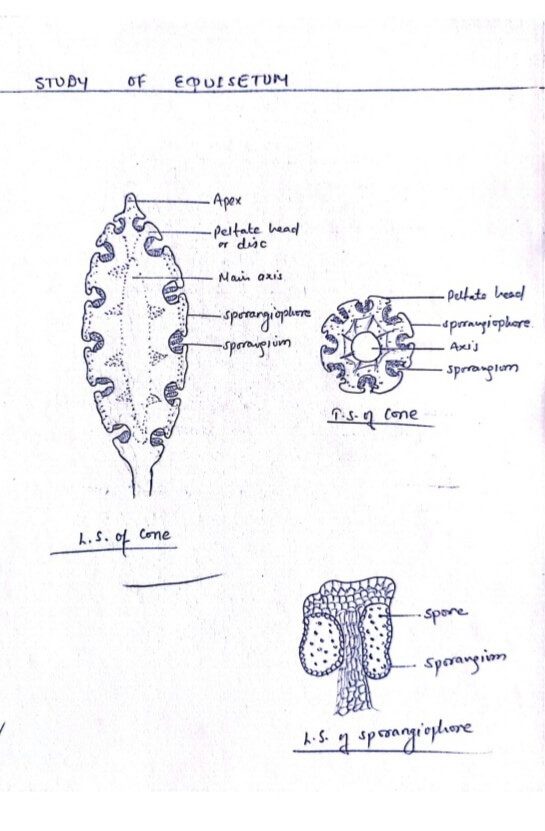COMMENTS ON EQUISETUM
Habit
It is commonly called a horse tail. It has Marvelous capacity to grow in variable environment conditions as a perennial herb. It is cosmopolitan in distribution.
Morphological structures
i) Sporophytic plant:
It is a well developed plant distinguished into root, stem and leaves growing up to 1m height. The stem has underground perennial horizontal much branched rhizome will nodes and internodes.
ii) tuber and root:
The under surface at the nodal region of the rhizome gives rise to small tube-like round bodies called tubers.
iii) Nodes:
The upper surface of nodes develops sterile and fertile aerial branches.
iv) Internodes:
The internodes of rhizomes and aerial shorts are longitudinally ribbed and situated alternately with the leaves of successive nodes.
v) Leaves:
They are simple, scaly and minute arranged in whorls at each node of aerial shorts. They
are free with pointed tips but fused below forming a sheath ground the base of internodes.

Internal structure of aerial stem
i) Epidermis:
An outermost single called layer consisting of compactly fitted and externally cutinized cells.
ii) Cortex:
A broad multilayered region underneath the epidermis which is divided into outer cortex and inner cortex. The outer cortex consists of sclerenchymatous bands.
iii) Endodermis:
The innermost cells of the inner cortex form a ring of one layered wavy endodermis.
iv) Pericycle:
An inconspicuous single layered parenchymatous ring lying inner to endodermis and outermost layer of stele.
v) Stele:
A siphonostele type consisting of a large number of feebly developed ring small vascular bundles surrounding a large pith cavity.
vi) Vascular bundle:
Each vascular bundle encloses a small coronal cavity formed by disintegration of protoxylem and filled with water.
vii) Medullary zones:
The vascular bundles are separated from each other by a large zone of medullary parenchyma.
viii) Pith:
It is represented by a large central cavity.

Internal structure of root
i) Epidermis:
A single celled outermost layer composed of thin walled cells some of which bean unicellular root hairs.
ii) Cortex:
A multilayered whole region consisting of a few layers of thick wall lignified hypodermal exodermis followed by many layers of parenchymatous cells enclosing large air spaces.
iii) Endodermis:
Beneath the cortex lies single layered parenchymatous endodermis beaning casparian strip at their radial wall.
iv) Pericycle:
Inner to the endodermis lies a thin layered pericycle encircling the stele.
v) Stele:
It is tri-arch to hexarch with a large central metaxylem surrounded by 4-6 small protoxylem alternating with phloem.

Asexual reproductive structures
i) Cone:
The reproductive organ is represented by a cone or strobilus borne at the terminal end of the fertile branch. It consists of a central cone axis which bears a number of density crowded. sporangiospores at right angles to the axis.
ii) Sporangia:
The peltate disc bears on its under surface, a ring of Several disc-like pendant sporangia.
iii) Spore:
The spore is round, surrounded by a layered thick spore wall of which the outermost one is epispore, middle one exosporium and inner endospore.
iv) Elater:
The epispore divides into two long spiral spoon-like bands called elaters. Wrapping around the spores.

